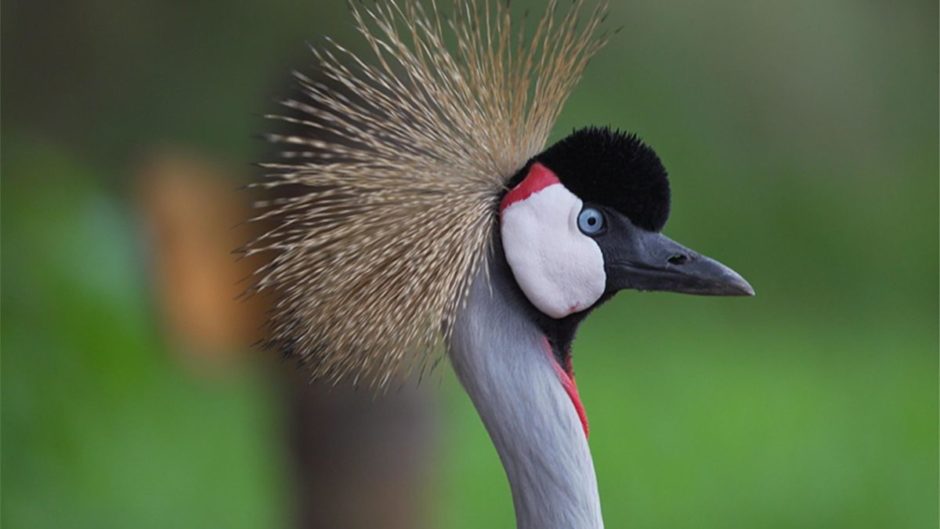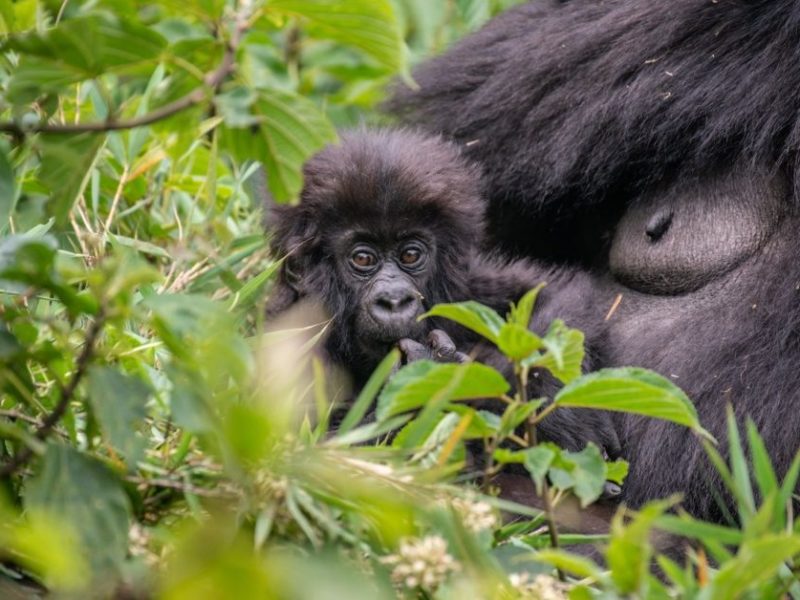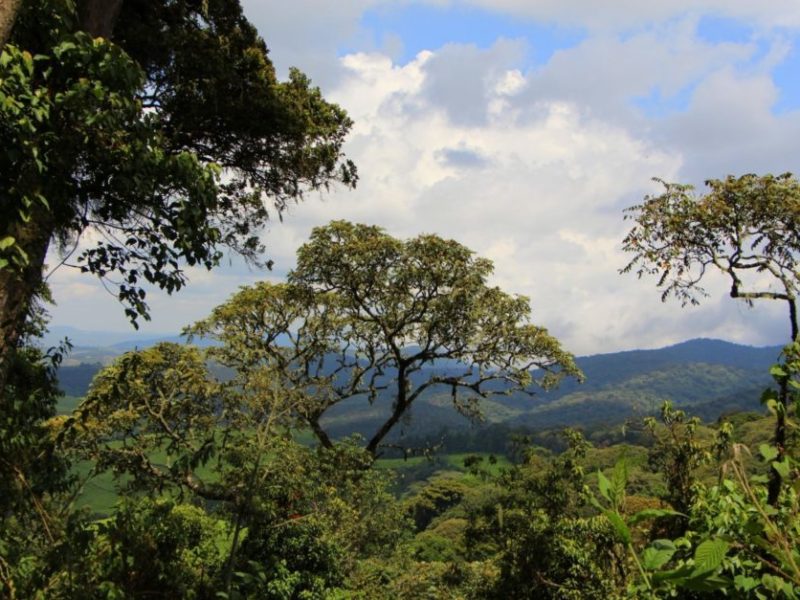
Securing the Future of Rwanda’s Crowned Cranes
A symbol of hope for the future of the Grey-crowned Crane population in Rwanda; 3 chicks were born in Akagera on Christmas day. A new generation who, thanks to the Crown Crane rehabilitation program, have been born free.
The wild population of Grey-crowned Cranes in Rwanda has been estimated at as few as 200-300, but there may be an equal number, if not more, in captivity. Veterinarian, Dr. Olivier Nsengimana, has been the driving force behind the program, working closely with RDB and Akagera Management Company, aiming to rehabilitate captive populations and return them to the wild.
The sad plight of the Grey Crane
Grey-crowned Cranes are statuesque birds and, as they are believed to be a symbol of wealth and prosperity, are now more commonly seen as ornaments in domestic gardens than in the wild. Many of these domesticated birds have had their wings clipped, or even broken so that they cannot fly away. They do not readily breed in captivity, so each captured Crane is not just a loss of one from the wild population but affects subsequent generations. Without intervention, we could easily see the demise of Rwanda’s wild Crane populations in just a few years.
RDB, Akagera come to the rescue
Early in 2014, RDB announced an amnesty whereby people and businesses in Rwanda could surrender their captive Grey-crowned Cranes and avoid prosecution for illegally possessing endangered wildlife. Through the amnesty, in Kigali city alone, almost 150 Cranes have been registered and 130 are already tagged with identifications bands on their legs. 42 of these spent six weeks in a quarantine facility in Kigali and 36 were moved to a purpose-made fenced facility near the park headquarters in Akagera National Park in January as ‘soft release’, allowing the Cranes to become accustomed to their surroundings before they chose to fly. If they have had their wings clipped, it can take between 6 months and 3 years before they are ready to fly. The program is a long-term initiative, a step-by-step process of sensitization, registration, tagging, assessment of their suitability for release and quarantine for diseases.
Within the relative safety of the fenced park headquarters, and with extremely protective and attentive parents, we are hopeful that all three chicks born in Akagera will survive and eventually fly.
How can you help?
If you happen to see a crowned Crane in the wild, look to see if it has a ring on its leg and record the number. Keeping track of the birds and any sightings will be valuable information for the program in the future. And if you have, or know of any, Crowned Cranes in gardens or hotels in Rwanda please contact the relevant authorities below.
Any Cranes found without identification tags after the amnesty period will be considered recently poached and the owners liable for prosecution which could see them fined for between 500,000 – 5 million Rwandan francs. Not all Cranes will be suitable for release but all captive Cranes must be registered and tagged.


